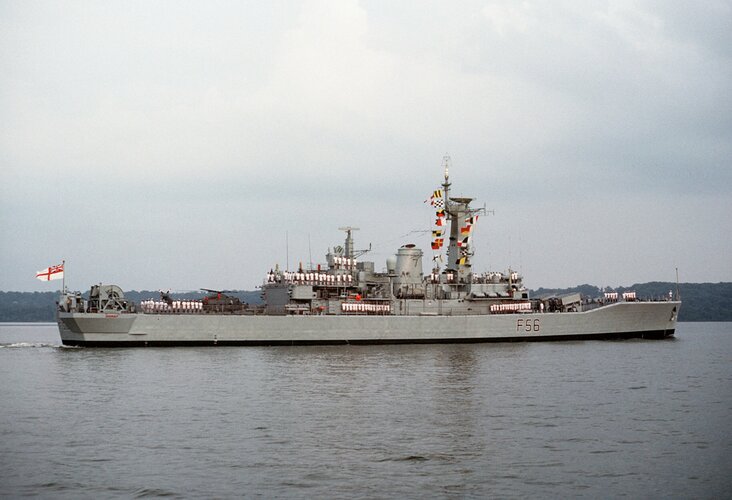Rule of cool
ACCESS: Top Secret
- Joined
- 16 January 2024
- Messages
- 1,820
- Reaction score
- 2,442
What's the go with using the Australian Ikara setup, with the launcher in the back corner? Is it the nuke depth charge thing?
What's the go with using the Australian Ikara setup, with the launcher in the back corner? Is it the nuke depth charge thing?
Read this post from the first page of the thread you are reading: https://www.secretprojects.co.uk/threads/re-arming-the-leander-frigates.41294/post-590040What's the go with using the Australian Ikara setup, with the launcher in the back corner? Is it the nuke depth charge thing?
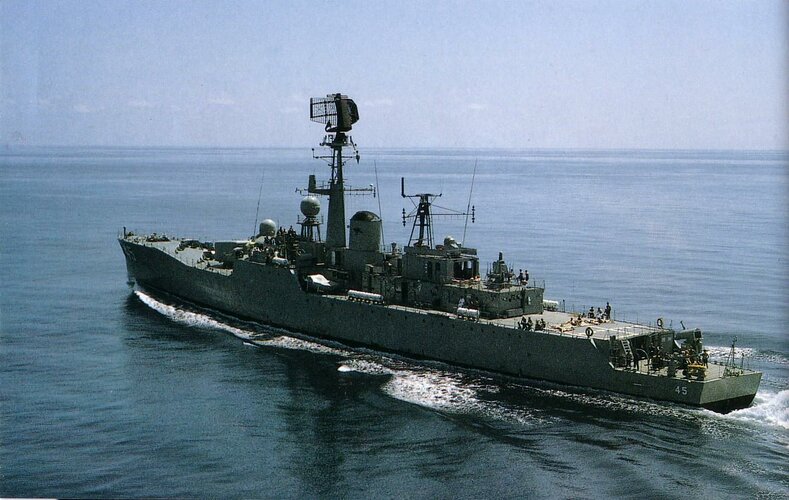
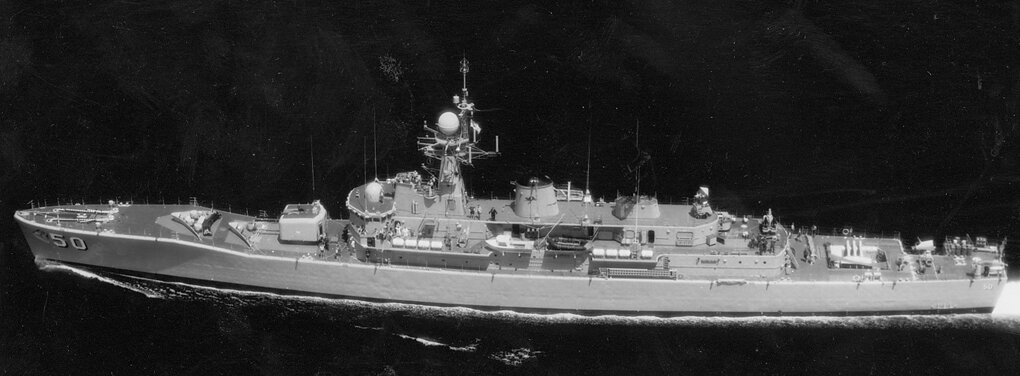
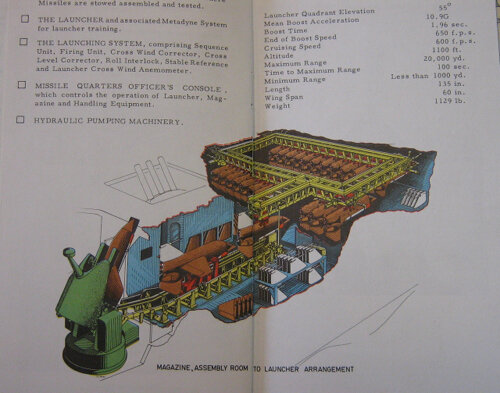
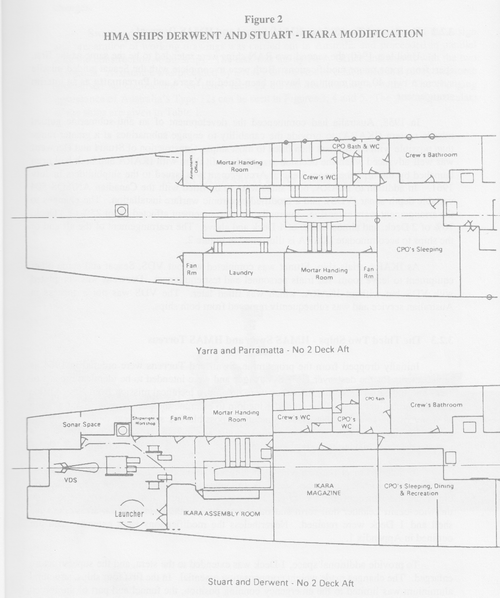
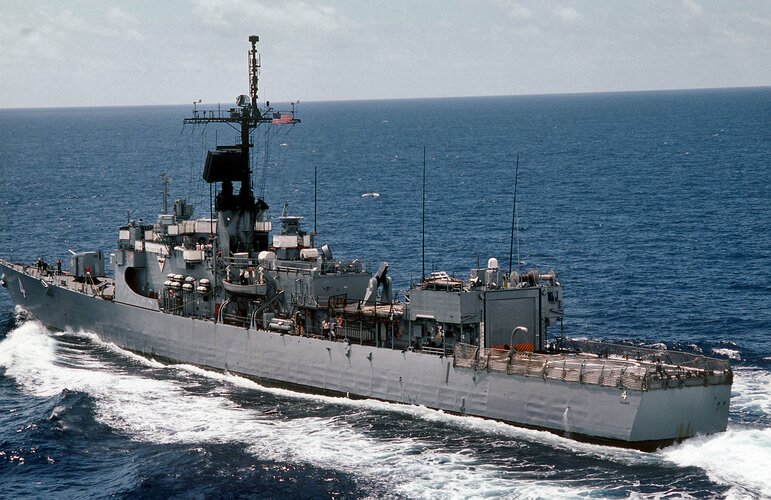
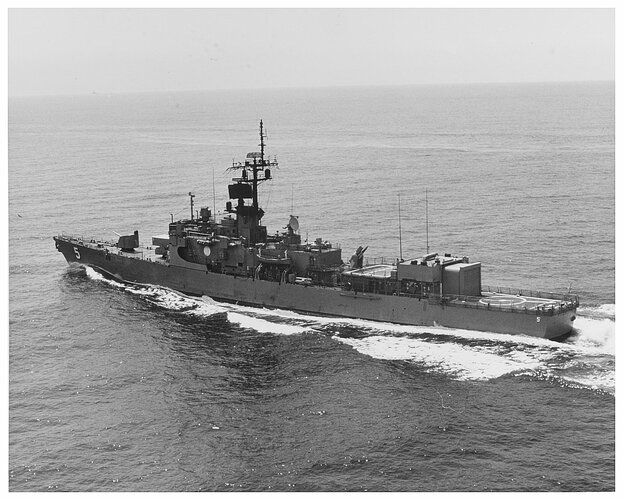
My problem with all the “if only lightweight sea wolf launchers had been developed as planned” AHs that are promulgated is that aiui the problem with Sea Wolf wasnt the launchers - the sextuple things arent a significant issue in themselves (and likely to be lighter than the oft suggested 2x twin or trip or quad in their place) - but the directors and the below deck volume required for the computers.) or to get the UK to go ahead with the 3-shot Sea Wolf launcher that had been intended to replace the Seacat 4-shot launcher 1-for-1 (not likely).
Was Seacat ever developed to a true blindfire capacity? IIRC it got at least as far as semi-auto command to line of sight (keep the crosshair on the target and the guidance system does the steering), but I don't know if it ever made that last step. If it did, a faster airframe might have kept it competitive - knowing that you can't really put a Rapier system on a ship because the hit-to-kill nature of the weapon might not deal with incoming missiles well.the problem with Sea Wolf wasnt the launchers - the sextuple things arent a significant issue in themselves (and likely to be lighter than the oft suggested 2x twin or trip or quad in their place) - but the directors and the below deck volume required for the computers.
First Harpoon missiles delivered in 1977. So arguably not really an option when the upgrade was planned.The problem with the Leanders IMHO is as with the EE Lightning; designed to too tight a spec with too little room for growth. A broad-beam Leander might have enough topweight allowance to take the compact Harpoon launch tube without losing its main guns, but was that even an option when the decision to fit missiles was taken?
A possibility but one thing that recurs during the mid-1950s though was that the Admiralty seemed to think that most small ships couldn't stow enough ammo to make the 3in L/70 a viable fit for AA use.Its not in the spirit of the thread, but I wonder how things would have panned out if the Leanders were armed with the twin 3" guns that the Tigers got. Would that have given them more weight margin for growth? Would it and Sea Cat have been enough air defence so further upgrades could focus an AShMs?
I don't think a nelicopter-equipped River would have retained Ikara. As I understand it, Ikara was developed because the RAN was dissatisfied with the helicopters capable of being carried on a Type 12; basically the Wasp. The Canadian's solution was Beartrap and Seakings on frigates. The RAN's solution was Ikara. As soon as capable frigate/ helicopter solutions became available, the RAN stopped fitting Ikara. For the same reasons I don't think the mooted Seaking-equipped County version for the RAN would have had Ikara either.I think that the RAN's type 12s could have been better modernized in the late 1970s - and here is how.
The only way I can see the RAN's Type 12s getting a better SAM system is either to mount a Sea Sparrow launcher atop the aft superstructure (in place of the Seacat) or to get the UK to go ahead with the 3-shot Sea Wolf launcher that had been intended to replace the Seacat 4-shot launcher 1-for-1 (not likely). A helo spot could be fitted if the Limbo is removed (as per Yarra in 1979-80) and a USN frigate-hangar (moderately short with a telescoping section that retracts into the fixed part of the hangar and is extended out when the helicopter is to be worked on or for inclement weather) could be fitted in place of the aft end of the superstructure (the spaces displaced could be fitted along the sides of the superstructure abreast of the funnel).
The helo for these modernized ships would have to be Lynx HAS.2s (deliveries from 1977 for the RN and other customers), with upgrades until the ships were decommissioned.
See this photo of HMS Yarra in 1984 to get the idea of my proposed modernization (the other 3 older ships would be the same):
View attachment 727526
Swan & Torrens would be similar:
View attachment 727527
Here is the RAN's Ikara layout:
View attachment 727528
View attachment 727529
USN small frigate hangar:
View attachment 727530
View attachment 727531
Needs a bigger warhead.How far along was Rapier at the time?
Or possibly the french 100mm? Not a Nato calibre but in service with a Nato navy (Hamburg class). Big enough (just) for naval gunfire support, to keep the army happy, but also with worthwhile AA capacity. Of course, that saves weight at the sharp end whereas you might want to save it down the blunt end.Needs a bigger warhead.
A single 3"/L70 could have been very useful and in development more could have been made of this.
If modifications along the lines I suggest had been carried out, the helicopter carried would have been a Lynx (or possibly SH-2 Seasprite) - but as helicopters still are weather-restricted keeping Ikara (for a while) would merit strong consideration.I don't think a nelicopter-equipped River would have retained Ikara. As I understand it, Ikara was developed because the RAN was dissatisfied with the helicopters capable of being carried on a Type 12; basically the Wasp. The Canadian's solution was Beartrap and Seakings on frigates. The RAN's solution was Ikara. As soon as capable frigate/ helicopter solutions became available, the RAN stopped fitting Ikara. For the same reasons I don't think the mooted Seaking-equipped County version for the RAN would have had Ikara either.
On another note, I was surprised to see it was the forward Limbo that was removed to accommodate the Ikara system. Never assume, as they say.
For the Aussies, yes. The Southern Ocean basically doesn't have anyone messing around in it, so the Aussies don't have the same push the UKRN does for an ASW weapon that works in weather bad enough to ground the helicopters.If modifications along the lines I suggest had been carried out, the helicopter carried would have been a Lynx (or possibly SH-2 Seasprite) - but as helicopters still are weather-restricted keeping Ikara (for a while) would merit strong consideration.
I do see, unless an improved Ikara airframe is developed that flew faster and or further is developed... then it might continue on.
Basic ASROC was unguided. Once it left the launcher, that was it; the heading could not be refined. Ikara could be steered the whole way. VL ASROC has some steering ability by definition, but I don't know whether this extends to midcourse guidance or only exists to put it on the right heading.Ikara had twice the range of the classic ASROC, but VL-ASROC reached the same range as Ikara.
It's probably worth pointing out that the RAN's Seakings operating from HMAS Melbourne were modified to be able to control Ikaras after they were launched ( presumably so the helos could maintain sonar contact with the submarine). So Ikara was a good deal more flexible than ASROC.There were a couple of proposed Ikara upgrades with additional range: M6 was stretched for a Stingray torpedo and had a modified Murawa boost/sustainer rocket for increased range, but was cancelled in 1976; M7 in the early 1980s was proposed with a turbojet sustainer.
Which is why I want to keep them as long as possible - preferably in an improved longer-ranged version.It's probably worth pointing out that the RAN's Seakings operating from HMAS Melbourne were modified to be able to control Ikaras after they were launched ( presumably so the helos could maintain sonar contact with the submarine). So Ikara was a good deal more flexible than ASROC.
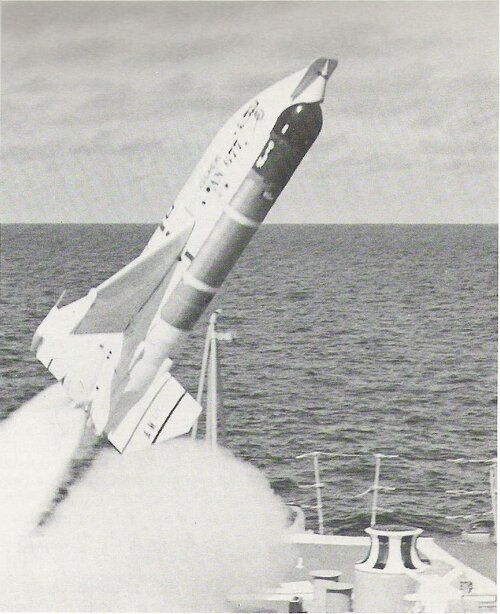
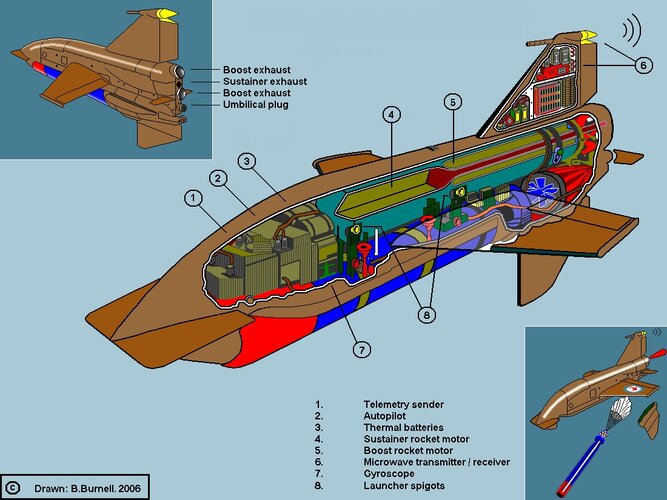
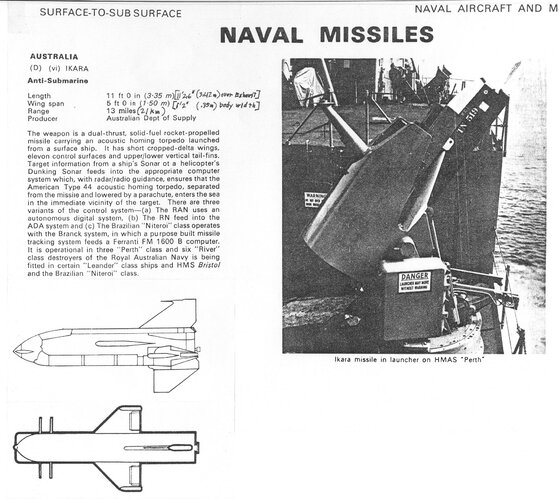
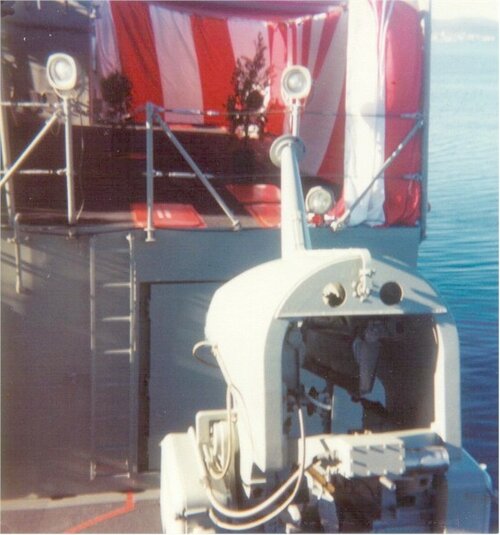
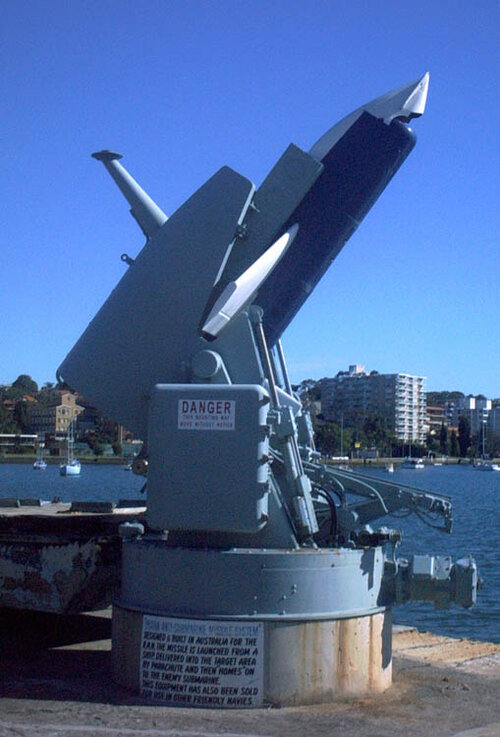
Leanders are just too small. 360ft long. The US FFGs were at least 50ft longer.Fwiw, I think the RN did about as well you can in rearming them, which reflects there just weren’t orher practical weapons then or earlier. The B1 Ikaras with VDS and helo were probably one of the best ASW ships out there, B2s I think a smaller gun + SSM a better fit (Mk8?) and B3s had the definitive Sea Wolf plus all could take towed arrays and the helo to act on it.
The Dutch ships were modernised a little later iirc, better than B2 refits definitely but still lacked any real air defence in comparison to RN broad beamed SW upgrades.
They were whet they were, we in the UK seem obsessed on minimum size, long after comprehensive evidence that didnt help with cost, indeed made them worse.Leanders are just too small. 360ft long. The US FFGs were at least 50ft longer.
A decent SAM didnt exist until Sea Wolf and the below decks demand of that made it difficult - I still think the installation was very compromised anyway.I just don't see a way to give them a decent SAM and gun and AShM while keeping Ikara and the helicopter.
Very different weapons and sources - I dont think that’d be a goer.If there was somehow a way to stick a couple of Exocets into the Ikara launcher it'd help, but I suspect the launcher itself is too slow to point.
Topweight probably. Didnt the B2s have to get their Excoets lowered at some point (maybe faulty memore!)The other option is to get the Exocets off the centerline and find a place to put them. On top of the hangar, maybe, with Seacat launchers port and starboard outboard of the Exocets?
If there was somehow a way to stick a couple of Exocets into the Ikara launcher it'd help,
Presumably binned as “something even better is just around the corner”…Seacat 2 always seems to me a simple way of updating the widespread Seacat launchers in RN service with a better missile.
But was it really any better in its 1980s incarnation? It didnt help in 91 against that silkworm and its still a lot of cost and effort for ships then with literally a handful of years left.Phalanx after 1982 could have replaced Seacat launchers.
Again, a lot of cost and just how many things do you want to fling? You’ve got the exocets, they’re integrated and all is well. Exocet thanks to 82 has a good rep.Harpoon replacing Exocets in the mid 80s would have been useful (8 rounds instead of 4).
Yes, perhaps that’s the requirmeent to butterfly away and get a much cheaper/simpler and easier to integrate Ikara installation. Except I think this reflected the total lack of confidence in ASW torps (light and heavy), noting Tigerfish was also pretty much junk and even Spearfish took a while to mature. Didnt we drop a load of airborne types in 82 which didnt hit anything? In the Ikara design timeframe (late 60s?), the various 50s torpedo projects had all failed and we ended up buying US as a desperation measure not because they were especially good. Nuclear depth charges were I think seen as the only answer to deep diving SSNs.RN Ikara seems to have been designed round the need to use a nuclear version.
That actually was my first inclination but downgraded to Rapier as this ship class was so light in size and weak for power generation.What about Crotale, was designed to be able to fit onto an armoured vehicle and the 8 round launcher fit smaller vessels. French but that didnt stop the adoption of Exocet? I vaguely remember talk of a naval 8 round Rapier as well which had compact electronics and a modified Blindfire radar though may have been a post it note doodle.
Does Crotale actually offer very much? I mean Sea Wolf struggled against the threats and that was a pretty high end system. “Lighter / simpler” to me means less capable and I think SW is a minimum.That actually was my first inclination but downgraded to Rapier as this ship class was so light in size and weak for power generation.
I don't know mate, a Tracked Rapier-like arrangement would appear to be quite compact and self contained....Wasnt the Rapier blindfire/darkfire radar (something like it) actually part of the later SW upgrades anyway? I struggle to sea how the Rapier system could have been taken to sea without growing a lot of cost and complexity and weight to solve martime and integration issues SW had already fafaced.i don't know mate
Not shipborne though or marinised, hence hasn’t faced the complexities SW had. Eg flex in alignments between launcher/director, movement of base platform (accounting for that in the guidance sw is huge) and having to operate/exist in very close proximity to many other powerful systems etc.I don't know mate, a Tracked Rapier-like arrangement would appear to be quite compact and self contained....
(Sorry about poor quality of pics)
Regards
Pioneer
All we had to do was upgrade to the MM.40 and we'd have had quad-tube launchers.Harpoon replacing Exocets in the mid 80s would have been useful (8 rounds instead of 4).
Despite Peter Marland's love of that mounting, everything he writes about it seems to be pretty damning. Only 46 ready use rounds on mount, in other words less than a minute of firing, and when it ran dry it had to be loaded externally by an upper deck crew (not something you want to do in CBRN conditions). The mount could only fire one type of ammunition at a time, with no ability to switch to any other types, unless the mounting was unloaded and reloaded with a different type and it is unlikely that you could mix different types within the hoppers, much like a machine gun firing a mixture of tracer and ball, given the automatic fuse setters between the hoppers and loading tray.Vickers perhaps already had the ideal answer in the 4in Mk Q.
It may interest you to know that only 10 out of 26 Leanders had the Type 199 in the first place and the last 5 didn't have the VDS well.I gotta disagree with @NOMISYRRUC about losing the VDS for refits.
A VDS is a very critical tool for a surface ship to chase submarines, because it lets you get your passive sonar down below the ~200ft thermocline. (Okay, it's usually a bit deeper than that, but that illustrates the point well enough)
Losing the VDS is a poor choice for a heavily ASW escort.
And later in the same paragraph it says . . .The variable depth sonar was intended to be fitted in a well situated in the extreme stern of the ship. All vessels in the class (except the last five ― Scylla, Achilles, Diomede, Apollo and Ariadne) had the VDS well but only Leander, Dido, Aurora, Naiad, Arethusa, Cleopatra, Charybdis, Hermione, Jupiter and Bacchante were actually equipped with the sonar gear.
Of the 10 out of 26 ships that had the Type 199 fitted 6 were Batch 1s (Leander, Dido, Aurora, Naiad, Arethusa & Cleopatra) and four were Batch 3s (Charybdis, Hermione, Jupiter & Bacchante).However, he resulting equipment was difficult to handle and operate, and was not of much use in areas of relatively shallow water such as the North Sea and British coastal waters. For these reasons the equipment was not fitted to all of the class.
